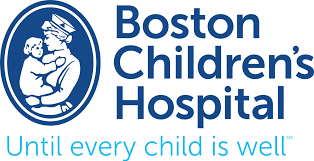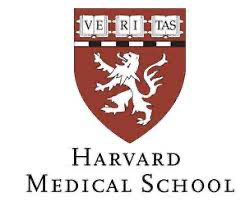This summer, I had the opportunity to intern at The Burns Lab at Boston Children’s Hospital.
The Burns Lab uses zebrafish to model human cardiovascular diseases. During my internship, I worked with postdoctoral fellow Warlen Pereira Piedade to learn whether genetic mutations in the zebrafish orthologs of FILAMIN C (FLNC) result in a

cardiovascular defect during development. FLNC mutations have been identified in babies with restrictive cardiomyopathy (RCM). Their hearts have stiff chambers that are unable to relax, which is associated with a build-up of protein aggregates and muscle fiber disorganization. FLNC is a structural protein that interacts with actin. In cardiomyocytes, which are the contractile muscle cells of the heart, FLNC is localized at the Z-disk, a region in the sarcomere. There are currently no therapies to treat FLNC-mediated RCM. Unlike humans who only have one FLNC gene, zebrafish have two, flnca and flncb. Mutations in each gene in zebrafish are loss-of-function knockout deletions that Warlen previously created using CRISPR-Cas9 genome editing. In both strains, FLNCa and FLNCb are missing in cardiomyocytes.

Zebrafish are used to model congenital heart diseases because their genes are incredibly similar to those in humans. Zebrafish are also easy to study because they produce large numbers of transparent embryos that develop rapidly and externally, which makes genetics and imaging of heart development very accessible. Zebrafish are highly efficient because they have a vast capacity for genetic mutations and are receptive to high-throughput screening. Lastly, zebrafish are relatively inexpensive compared to other organism models such as mice.
To test whether FLNCa and FLNCb are required for heart development in zebrafish, I set up incrosses between FLNCa+/-;FLNCb+/- adults and collected their embryos. At 3 days post fertilization (dpf), I screened all the embryos for pericardial

edema, a sack of excess fluid around the heart that is indicative of a cardiovascular defect. I observed edemas that varied in size and hypothesized that those with more intense edema were double knockout (DKO) for both FLNCa and FLNCb, whereas smaller edemas could be single knockout (SKO). If I had more time, I would like to investigate the differences between the SKO and DKO mutants because I only looked at the two extremes, DKO and their control siblings, which were wild type for both FLNCa and FLNCb.
I first counted the number of embryos with edema to see if the phenotype was being

passed down in a predictable Medelian ratio. Next, I genotyped the animals by extracting genomic DNA from my samples by boiling the embryos. In addition to genotyping embryos, I also helped clip a small piece of adult zebrafish tails which could also be used to extract genomic DNA. The primary method I used to genotype was polymerase chain reaction (PCR). PCR is an amplification technique that copies a specific part of DNA to create millions of fragments. Denaturation, the first stage of PCR, separates the double helix DNA into single strands. During annealing, specific synthetic DNA primers attach to both ends of the targeted DNA segment of DNA. The final stage, extension, uses an enzyme called Taq polymerase to assemble excess nucleotides into an identical strand starting from the forward primer. Each stage of PCR is regulated with a set temperature and time.
Once the PCR was complete, I used gel electrophoresis to visualize the targeted DNA. While

running a gel, an electrical current pulls each sample’s DNA through a gel matrix and fragments of DNA are separated based on their size. Once the gel finishes, I could see different bands indicating whether each sample has the targeted genetic sequence or not. If the PCR worked successfully, I could identify the wild type (+/+), heterozygote (+/-), and mutant (-/-) zebrafish based on band size. Interestingly, when genotyping adults, I never found any FLNCb-/- zebrafish; however, I did find the expected 25% of FLNCa-/- adults, which matches the Mendelian ratio. From these results, I concluded that loss of FLNCb is lethal. I also conclude that loss of FLNCa is tolerated because FLNCb can compensate in its absence.
This genotyping process failed many times during my time in the lab. I learned that PCR is a highly sensitive reaction, so even an error of a few microliters when pipetting my samples would result in an unclear gel. By setting up multiple failed PCR reactions, I learned the importance of precision and accuracy in the lab, especially when pipetting solutions. PCR can also fail because the primers might bind non-specifically to DNA resulting in additional and confusing bands on the gel. For genotyping both the FLNCa and FLNCb lines, I tested multiple protocols with a different combination of primers and different temperatures for annealing and different times for extension. I was ultimately successful after troubleshooting the protocol.
To test whether the heart has a functional defect in the absence of FLNCa and FLNCb, I performed live imaging of embryonic hearts. To this end, I mounted the embryos in agarose and took pictures and short videos over successive cardiac cycles through a dissecting microscope with and without fluorescence. From the movies, I measured ventricular and atrial areas of DKO and control hearts during diastole and systole. I also calculated the percent fractional area change (%FAC) in both chambers, which is the difference between the end diastolic area and the end systolic area. I found that the average %FAC in control ventricles was around 23, which was significantly reduced in FLNC DKO ventricles due to their stiffness. I also found decreased contraction and relaxation in the atrium of DKO compared to controls. Overall, I concluded that FLNC is required in the zebrafish heart for pump function.
A second way that I imaged hearts was by confocal microscopy, which produces a static but very high resolution image. To use the confocal microscope, we first prepared the embryos

by immunostaining. Immunostaining uses antibodies to target a protein of interest with a fluorescent signal. Specifically, the primary antibody binds to the target protein, while the secondary antibody that is conjugated to fluorescent signal binds the primary antibody and displays the fluorescence. I also blocked other proteins from binding to the primary antibody and performed a series of washes to remove any nonspecifically bound antibodies. To my surprise, the confocal images showed that the ventricles of FLNC DKO hearts appear larger, which I confirmed by measuring the ventricular area using Fiji software. If I had more time in the lab, I would test why the ventricles are larger in FLNC DKO embryos by counting the number of cardiomyocytes and by measuring individual cardiomyocyte cell size. Overall, I found that FLNC is essential for healthy heart and cardiomyocyte development and that this function is conserved from zebrafish to humans.
Though I learned so much about zebrafish, FLNC, genetic mutations, and how to run many different experiments, I also took away valuable lessons on how to be a scientist. During my six weeks at the Burns Lab, I had many failed experiments and unclear results. Though some of these results were due to my own mistakes, many results required us to adjust our protocol to troubleshoot the problem. Another key skill I learned was how to read original research published in a scientific journal. Each week, I had to read and discuss at least one paper relating to some element of cardiology. Although they were often challenging, I learned how to understand the big picture and how to interpret figures, data, and statistics.
I am very grateful for the experience I gained from this internship and the opportunity to see what some potential career paths can look like in STEM. I would like to thank the entire Burns Lab for welcoming me into their space this summer and teaching me so much, especially Caroline Burns, Geoff Burns, and Warlen Pereira Piedade. I would also like to thank Rivers and Mr. Schlenker for this amazing opportunity.







